Jude Knight's Blog, page 152
January 24, 2015
First 5 weeks of Candle’s Christmas Chair, graphed.
Where in the world are those books going? This is a chart of the Amazon downloads of Candle’s Christmas Chair. Mostly to readers from the US and UK sites, but a substantial number from Italy, Germany, India, and Australia. Note the enormous jumps on the days each site in turn price matched (to free).



January 23, 2015
I meet Candle and Min
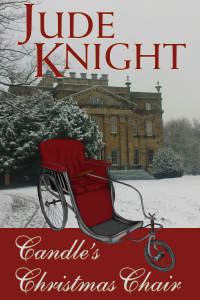 This excerpt from Farewell to Kindness is for those of you who have read and enjoyed Candle’s Christmas Chair (27,500 downloads so far, not counting those resellers that don’t report free book downloads, libraries, Scribed, and the three pirate sites I’ve found). Thank you for the wonderful reviews and star ratings.
This excerpt from Farewell to Kindness is for those of you who have read and enjoyed Candle’s Christmas Chair (27,500 downloads so far, not counting those resellers that don’t report free book downloads, libraries, Scribed, and the three pirate sites I’ve found). Thank you for the wonderful reviews and star ratings.
In the back of the novella, I say:
Candle and Min first appeared when I was writing my novel Farewell to Kindness. I needed someone to diagnose sabotage on an invalid chair that collapsed in the middle of an assembly, and Min pushed her way out of the crowd, with Candle hovering protectively behind her.
I wondered how two such different people got together, and this story is the result.
In the excerpt below, we’re at a country Assembly. One of the organisers is Lady Avery, the wife of a local viscount. Supper is over and Major Alex Redepenning, an injured war hero and current user of the chair, is refusing to allow his broken and infected legs to spoil his fun.
The dance was a line dance, the Bloom of the Pea, and Alex—invalid’s chair and all—was taking part. Jonno promenaded him up the centre and back, and twirled him around his partner, she entering into the escapade with enthusiasm by holding the steering column of the chair when the pattern called for her to hold her partner’s hand.
Some of the bystanders, and even some of the other dancers, were crowding closer to see this original version of the Bloom.
The last part of the pattern called for the lead couple to weave down the line of other dancers, and Jonno began pushing Alex down the men’s line, as the Major turned the chair from side to side to go in and out.
They were halfway down the line when, with a loud crack that could be heard over the orchestra, the chair collapsed, spilling Alex into the man he was passing.
Jonno stood bewildered in the middle of the floor. Susan hurried to her brother’s side, getting there just after Rede. And Lady Avery hurried up to kneel beside the broken pieces of the chair.
The man Alex had knocked to the ground was getting up, carelessly shoving Alex to one side. Alex let out a muffled grunt. “Careful, man!” Rede told the stranger.
“He knocked me. Tell him to be careful,” the man protested, but Rede gave him no further attention. Alex was white as bone, his teeth gritted.
“Everyone stand back,” Rede commanded. “Give him room.”
“It was his own fault,” the felled dancer continued grumbling.
Dr Millburn pushed his way through the crowd and knelt beside Alex. Leaving him to provide the needed care, Rede focused on getting people to move back, widening the circle of gawkers.
Susan spoke to Jonno, and he pulled himself together and went off, coming back a few minutes later with John and a board large enough to provide a stretcher.
With Dr Millburn supervising, they moved Alex carefully onto the board. He had recovered enough to joke, “How convenient that I’m staying just down the hall.”
“It is indeed, Major Redepenning,” the doctor said cheerfully. We can examine you in comfort. Doesn’t seem to be too much damage done, except to the chair. Odd. I wouldn’t have expected it to come apart like that.”
Lady Avery, who—with Bradshaw her father—had been carefully examining the broken pieces, said, “It had help.”
“What do you mean?” Alex asked.
“She means sabotage,” said Bradshaw. “Someone deliberately damaged the chair so that it would break.”
“And it has been done in the last fortnight, since I gave the chair to Dr Millburn,” Lady Avery insisted.
“How can you be sure?” Rede asked.
“I gave it a complete overhaul before I sent it to him,” she replied.
“You can believe her.” That was Lord Avery. “The chair is her design. If she says it was in good order, it was. If she says it was deliberately damaged, it was.”
A dozen voices all started up at once, far more titalated by idea of a peeress who made invalid carriages than by the putative assault on Alex. In the chaos, John and his nephew carried Alex off to the bedroom wing of the hotel, followed by Dr Millburn and Susan.
Rede sent Will to find the manager of the hotel, and secure a room where he could question staff about who had access to the chair.
“We’ll need to clear the floor,” said the Master of Ceremonies. “That,” he pointed to the wreckage of the chair, “is in the way of the dancing.”
Lady Avery nodded at Rede’s quizzical look. “I have learned everything I can from where it is lying. Just give me one minute to make a sketch and we can clear floor.”
“Madam, I do not think…” the Master of Ceromines began.
“Lady Avery will make her sketch,” said Lord Avery, firmly. The Master of Ceremonies looked at the tall young viscount, and Rede, who was standing shoulder to shoulder with him, and clearly decided against arguing.
“Yes, well,” he said. Then turned and raised his voice. “Perhaps everyone would like to move through to the supper room while we clear the floor? Dancing will resume shortly.”
Lord Avery grabbed a footman by the arm as he passed. “Fetch something for my lady to draw on,” he commanded.
Lady Avery, who had been talking in low tones with her father, turned and slipped her arm into his. “I am sorry, Ran.”
He looked down at her affectionately, a tall greyhound to her little kitten. “For what?”
Lady Avery waved her unused hand at the crowd. “Now they’ll all be talking again.”
He smiled, taking her hand in his. She had removed her gloves while she examined the wreckage, and Rede felt a pang of longing when Avery lifted her hand to kiss the palm and fold her fingers over the kiss. Had he ever had someone to touch with such casual affection? His children, of course, but the Wades and Spencer had taken that from him. He saw Anne hovering on the edge of the crowd, and took comfort from her presence.
“They always talk, Min,” Lord Avery said to his wife. “Stupid cats. We don’t care, remember? I’m very proud of my lovely, clever, creative wife, and I don’t care who knows it.” He looked challengingly at Rede over her dark head.
“I am awestruck,” Rede told her. “You really designed the chair yourself, Lady Avery? Alex loved it. He already had great plans for touring our boyhood play places. I hope it can be fixed!”
Bradshaw, who had drawn closer, said diffidently, “I could take a look at ‘er, MIn. I’ve a wee workshop set up at home.”
Lady Avery laughed. “So have I, Papa. Lord Chirbury, if we cannot get it working again, we will get Major Redepenning another one.”



January 22, 2015
‘Just friends’ – a scene from Encouraging Prudence
 Prue blew out the candle, sinking the summer house into darkness. On the second floor of the house, a window showed light, and a shadow moved back and forth on the curtains. Whoever was inside was pacing the floor.
Prue blew out the candle, sinking the summer house into darkness. On the second floor of the house, a window showed light, and a shadow moved back and forth on the curtains. Whoever was inside was pacing the floor.
“Madame’s room,” Prue said. “Bother the woman. How am I going to get back to my room?”
“Sleep here,” David suggested. “I’ll wake you in time to get back into the house before the servants are about.”
The knack of waking at whatever time he chose had come in handy many times. And he could do with a few hours sleep himself. He’d sleep better if Prue was close. Though he’d sleep better if she hadn’t agreed so quickly that they were friends. Only friends.
Prue hesitated, but then turned and made her cautious way back across the dark room to the chest to recover the blankets. He helped her spread them across the bed. Working by touch, he couldn’t help but brush up against her several times. Each time, she stiffened and moved away.
Even when they lay side by side under the blankets, she kept herself apart.
He forced himself to keep the hurt from his voice, and speak calmly.
“Sleep, Mist. I’ll wake you with the dawn.”
“Goodnight, David,” she answered, her voice sounding small, even humble. “David; we are just friends, are we not?”
Just friends. So many answers crowded his mind, tangling into one another on their way to his tongue that he said nothing. And, as the silence stretched, he heard her breathing change. She was asleep.
He moved a little closer, close enough to sense the shape of her without any part of him touching any part of her. The only possible answer was suddenly clear. Just friends. If that was all she was prepared to offer, then he’d take it. For five months there had been a Prue-shaped hole in his life, and much though he wanted her back as his lover; much though her rejection clawed at his vitals; being near her, talking to her, working with her was better than living with the emptiness.
“Yes, Prue,” he whispered. “Just friends.”
~*~
During the night, they drifted together. The cold, Prue told herself. It was the cold that had them spooned together, sharing body heat in the cocoon of blankets.
He didn’t want her. “We are just friends?” she’d asked him, hoping he would say they were far more than that. She thought he wasn’t going to answer. She’d schooled her breathing to the rhythms of sleep, afraid that if she said anything more she would beg. And long after she had asked the question, he finally answered. Just friends.
“Prue?” he murmured in her ear now. “Prue, it’s almost morning.”
He was moving away from her, leaving a void of cold all down her back.
She rolled over, looking after him as he slipped from under the covers and began pulling on the boots he’d discarded the night before.
He was so handsome. Shorter than both his half-brothers, and dark where they were fair. The straight brows and the firm chin were the same shape. His broad shoulders flexed as he tugged the boots into place. It crossed her mind that she’d now seen the naked torsos of all three brothers.
She had a sudden vision of David’s naked back and small firm buttocks moving away from her across their bedroom on the island. Her mouth went dry at the thought.
She clambered past him out of the bed. She needed to get these ridiculous longings under control. However much David desired her when they were isolated, he didn’t want her now. Why would he, after all? She knew she was nothing special. Here, in London, David had access to women more beautiful, more witty, more cultured, more in every way.
At least he still wanted her friendship.
It would have to be enough.
Prue had slipped out of her gown last night, before lying down to sleep. In the dark, she’d thought nothing of it. Now, the pallid light of dawn filtering through the canvas meant she was dressing in front of him. No. He wasn’t watching. He had crossed the room and was examining his coat.
Confirmation, if confirmation had been needed, that he no longer saw her as a woman. Just friends. Right.
“Today, perhaps I will be able to investigate the book room,” she said as she stepped into the gown, forcing her voice to sound cheerful.
“Can I help?” he asked. “With your lacing, I mean.”
No! A thousand times no. When he’d touched her accidentally several times last night, she had nearly disgraced herself. She shuddered at a picture of herself at his feet, clinging to his knees and begging him not to spurn her. “No, thank you.” She managed to keep her voice steady. “I can manage. It laces at the front.”



January 21, 2015
The rules of genre – and which ones count
 As a reader, I have never been very fond of the way that the book industry divides books up. In book shops. In libraries. Real fiction here. Mysteries, Westerns, Romances, and SF off in their own little ghettos over there. Yes, I know they did it (and some still do) to help readers who have a passion for a particular type of story. I get that.
As a reader, I have never been very fond of the way that the book industry divides books up. In book shops. In libraries. Real fiction here. Mysteries, Westerns, Romances, and SF off in their own little ghettos over there. Yes, I know they did it (and some still do) to help readers who have a passion for a particular type of story. I get that.
But I objected for two reasons. First, for myself — as an omniverous reader of all types of fiction. Back before the days of online catalogues, library visits had me scurrying all over the building: sf, mystery, general, romance, young adult… Good exercise, but all the moving around ate into precious lunch break time that could have been spent reading.
Second, for the writers. And now that I am one, I’m finding this argument even more compelling. What if you write historical mysteries with a touch of the paranormal, plus a central mystery and a romance between the two protagonists? What if the book is set in a 19th century western scene on an alternative Earth? What if your protagonists walk away from one another at the end, but three books full of thrilling adventure later finally have their happy ever after? How do you categorise your genre?
Okay. That might be an exaggerated example, but I hope it makes the point.
I don’t have a problem with defining my books as romance, using the definition given by Robyn Reader in a post on Dear Author:
Romance, as a form, has come to be known by three main elements: a) a romantic love story, b) that is central to the narrative, c) and resolves in a happy ending for the lovers. But within that form are many formulae.
And since they are set in history, they are historical romance.
But let’s not use how they are defined to confine them, okay?
Two years ago, when I settled on a series of stories set in late Georgian England, all with a romance that ended in a happy ever after, I started reading craft books. And I met The Rules.
Genres establish certain rules for how books should be written. For example, a romance novel should start with the female perspective, and the male and female protagonists should meet in the first chapter. Romances are also told with the protagonists’ viewpoints alternating.
Now, some of these genre rules can be broken, but stepping out from the established formula can have its consequences. The reader of a particular genre has been trained to expect the formula. Surprising the reader can be a good thing, but most of the time it’s off-putting. [Rachel Kent, The Rules of Genre, Books & Such Literary Management]
Since starting down this path, I’ve been in a lot of discussion about The Rules. I’ve talked with people who are bthered that they’re breaking The Rules (perhaps by having a rape, or introducing too much historical detail, or telling the story from the point-of-view of another character, or keeping the protagonists from meeting early on). I have myself met The Rules in the form of an agent, who told me that my characters couldn’t marry till the end of the book, because marriage was the happy ending; in the form of a reader who wanted me to delete my secondary romance and another who objected to the delay in that all important first meeting; in the form of book snobs, who say they don’t read romance because it is formulaic.
In the Robin Reader post I referenced above, the writer says:
When people call Romance formulaic, it’s generally in a denigrating way, as if to imply predictability, triteness, and staleness. However, both form and formula are important to generic integrity, because while form ensures coherence and definitional consistency, formula provides familiar elements that a reader may like and want to see in particular combinations… The common mistake people make in denigrating genre as formula and formula per se, is the assumption that structural and narrative limits are bad, and that they contravene artistic freedom and creativity.
But here’s the thing: genre itself is about formal limits. Genre is definition, delineation, recognizability, consistency, reliability. Genre is as much about what doesn’t belong as what does, and as with most delineating structures, its boundaries are most easily seen when they’re being tested. Formula is the same way, only on a narrower scale. Formula is like form within form, a further delimitation of narrative within genre. In the same way that all genre is form, all genres contain formulae.
I’ve published a novella that followed The Rules (mostly), and that was, furthermore, classifiable as ‘sweet’. And it has been a success — on several Amazon best-seller lists in the US and the UK, with more than 26,000 downloads in the first five weeks, 4.4 star ratings on Amazon and nearly 40 reviews, all but two positive. My first novel, however, doesn’t follow the rules, and is more gothic than sweet. Should I be worried?
In the Dear Author post, Robyn Reader goes on to discuss how good books test the boundaries of the formula, and concludes:
For me, all these circumstantial discussions about specific books and about what supposedly sells and what is supposedly popular and why, ultimately circle back to the question of what constitutes genre. Without question, readers have strong preferences, although I’ve yet to read one convincing argument about the “rules” of Romance that go beyond the very basic elements of the genre. Inevitably, these conversations about rules and about sales rely first on subjective elements of the genre and perceived reader reactions to them, and then on the belief that what sells must be what readers want…
Still, let’s say that readers want what sells. Let’s accept that as truth for a moment. What does that really mean? Does it mean they won’t like something new? Does it mean they won’t like something different? Does it mean they all like those books for the same reason and dislike other books for the same reason? No, it doesn’t. In fact, I think we know far less about what it means than we know that it means something – or more likely, a bunch of different things that may or may not be relevant as part of an author’s decisions about what to write.
Here’s the thing. I hope to please you in what I write, Dear Reader. Good reviews thrill me, particularly when a reviewer includes a phrase or a sentence that shows they ‘get’ something I particularly liked about a story when I wrote it, such as the lovely person for whom the highlight of Candle’s story was the way his surprise Christmas present affirmed his respect for Min’s talent and independence.
And selling books, while unlikely to be a lucrative career option, is certainly better than not selling books. (Even if I only sell enough to cover the cost of the cover design and the proofreader; breaking even would be nice.)
But I don’t write to please you. How could I? Which one of you would I please? I write to tell the stories of the characters that are frothing up from my brain. I write the kinds of stories I want to read. And I self-publish, so — while I seek the opinion of beta readers, fellow writers, and others whose opinion I respect — I don’t have to negotiate publishing gatekeepers.
As long as my stories fit those three basic elements (a romantic love story, central to the narrative, resolving in a happy ending), I’ll keep calling them romances. If I write mysteries, I’ll happily follow the five rules of the mystery genre:
The solution of some mystery or puzzle must be necessary in order to resolve the central conflict.
The detective must use only their wits and skills to solve the puzzle, and these wits and skills must believable in the context of the story.
No clue that is important to the solution of the puzzle may be concealed from the reader.
Unusual and improbable circumstances, such as super criminals, obscure poisons, crime rings, secret entrances, coincidences and the like, must be used infrequently and skillfully enough to be believable in the context of the story.
Justice must, in one fashion or another, be brought about by the action of the detective.
And if I write sf, I’ll know the question (the ‘what if’) I’m proposing as context, and I’ll ensure my answer conforms to the rules of whatever physical universe I postulate. If you like sf, you might enjoy this list of 10 rules. All of which have been broken by one or more amazing books.
Do those rules make sense to you? Would you add any? Delete some?
I’m not promising to follow any other rules. In fact, being a second child and therefore rules averse, I’ll be going out of my way to see how many others I can find, so I can break them. Do you want to help? Just put the rule of genre that most annoys you into the comments, and we can talk about how we might make breaking it into an palatable and exciting storyline.



January 20, 2015
Writing process blog tour
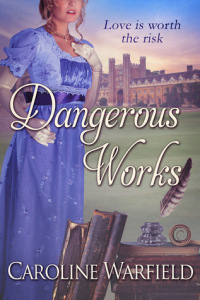 Today, I’m having my moment with the torch of the Romance Writers’ Blog Hop. It has been passed from writer to writer for some time. Not only do you get to know a little about me and my writing process, but I get to introduce you to fellow romance authors so you can learn about their individual writing styles and processes.
Today, I’m having my moment with the torch of the Romance Writers’ Blog Hop. It has been passed from writer to writer for some time. Not only do you get to know a little about me and my writing process, but I get to introduce you to fellow romance authors so you can learn about their individual writing styles and processes.
I was nominated by my friend Caroline Warfield, writer of Dangerous Works and the forthcoming Dangerous Secrets (release date 18 March). With a 4.9 star average rating on Amazon, Dangerous Works tells the story of a scholar who dares scandal to learn what she needs to know to illuminate her study of Greek poetry, and the man she trusts to teach her.
You’ll find Carolyn on:
My writing process
Now to answer the questions about my writing process.
What do I write?
 Tempting though it is to give Hamlet’s answer (“Words. Words. Words.”), I’ll behave. So what do I write. The short answer is ‘historical romance’, but this is my blog, so I’m allowed to give the long answer.
Tempting though it is to give Hamlet’s answer (“Words. Words. Words.”), I’ll behave. So what do I write. The short answer is ‘historical romance’, but this is my blog, so I’m allowed to give the long answer.
The novel and novella I’ve written, the two I’m working on, and the ones I plan to write in the next few years are set in the early 19th century. I do a lot of research to get the details accurate, and I include snippets about world and local events as part of the background to the action.
So ‘historical’ works.
Every plot so far tells the story of two people being attracted to one another and falling in love, and finishes with the two main protagonists starting a ‘happy ever after’ that I try to make believable.
So ‘romance’ works too.
And the first three novels also include elements of mystery and thriller. So I’d be quite comfortable with those designations, too. (The novella, though, is a straight sweet historical romance.) If people like the protagonists of my 2nd novel, I may go on to write about more of the cases they investigate together, and those will be historical mysteries rather than romances.
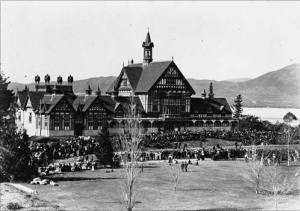 I have some book ideas for other historical periods: for example, the elves that whisper stories to me want me to write a murder mystery set in Edwardian times in Rotorua. But, at the moment, I’m sticking with the early 19th century.
I have some book ideas for other historical periods: for example, the elves that whisper stories to me want me to write a murder mystery set in Edwardian times in Rotorua. But, at the moment, I’m sticking with the early 19th century.
I’ve also started (and abandoned) a number of sf books that I may go back to eventually. And the short stories I had some success with in the dim dark ages of my youth qualified as literary, being otherwise unclassifiable and universally gloomy.
What am I currently working on?
 I’m continuing to market my first published fiction in 30 years, my novella Candle’s Christmas Chair. Candle is available free from all major ebook outlets and is doing well — more than 25,500 copies downloaded in its first 5 weeks and over 100 reviews in various places, with an average rating of over 4 stars.
I’m continuing to market my first published fiction in 30 years, my novella Candle’s Christmas Chair. Candle is available free from all major ebook outlets and is doing well — more than 25,500 copies downloaded in its first 5 weeks and over 100 reviews in various places, with an average rating of over 4 stars.
I’ve just sent my debut novel, Farewell to Kindness, to the proofreader. It will be on prerelease early in March and published on 1 April. In Farewell to Kindness, an earl on a mission of revenge is attracted to a widow who lives rent-free in one of his cottages, and whose daughter is the image of his predecessor, his deceased cousin. Rede, the hero, doesn’t want to be distracted from his quest to destroy the villains who killed his family. Anne, the heroine, wants to stay in hiding to avoid the villains after her and her family. Love is both unexpected and inconvenient. Farewell to Kindness is the first in the series The Golden Redepennings.
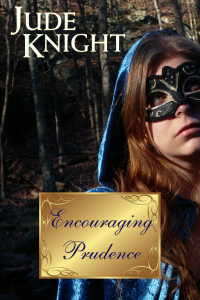 I’m writing the first draft of Encouraging Prudence, starring the thief taker (bounty hunter) who helped Rede in Farewell to Kindness, and the spy he loves. Sent to investigate a blackmail scheme, the two uncover blackmailers, murderers, traitors, difficult relatives, and one another’s vulnerabilities.
I’m writing the first draft of Encouraging Prudence, starring the thief taker (bounty hunter) who helped Rede in Farewell to Kindness, and the spy he loves. Sent to investigate a blackmail scheme, the two uncover blackmailers, murderers, traitors, difficult relatives, and one another’s vulnerabilities.
I’m also researching for A Raging Madness, the second in The Golden Redepennings. Alex, Rede’s cousin, is coming home through Cheshire when he meets a woman he can’t stand and can’t forget. Ella thought Alex was the last person on earth she would turn to for help. She knows what he thinks about her. But when her evil in-laws seek to have her committed to an asylum, she is forced to seek his protection. I need to find out more about the canals through Cheshire.
And I’m beginning to plot a novella — another Farewell to Kindness prequel — for a boxed set I’m putting together for Christmas 2015 with a group of friends. Tentatively called Gingerbread Bride, it tells the story of a woman with a reputation for running away.
“Not away,” Mary said, definitely. “To. I run to. There’s a difference.”
“Away. To. It doesn’t matter. You’re a lady now; not a little girl. Surely you must see that you have to go home?” Richard didn’t expect Miss Waterford to listen, though. When had she ever?
“You can’t stop me, Lieutenant Redepenning. You can’t stop me, and you can’t catch me.” She flung her last words behind her as she heeled her horse into a flying gallop, striking his with her whip as she passed. “No-one can!”
Richard, shouldered to one side by the horse, sat where he’d landed, watching the two horses and the Admiral’s daughter receding into the distance. Annoying, arrogant, impudent, self-willed little bitch. What a woman!
How do my historical romances differ from others in the genre?
 Books in the general category ‘historical romance’ cover a huge range of different eras, plot tropes, character types, tonal styles, and subcategories. And self-publishing has opened the door for writers to produce work that broadens the range still further.
Books in the general category ‘historical romance’ cover a huge range of different eras, plot tropes, character types, tonal styles, and subcategories. And self-publishing has opened the door for writers to produce work that broadens the range still further.
I write strong determined heroines that, in ways that can be defended as historically feasible, refuse to accept the constraints society would place on them. I write heroes that can appreciate and respect my heroines. And I write villains that you’ll love to hate.
I also create complicated plots with a large cast of characters, and I enjoy using settings that don’t comply with the ballroom/house party scenes that are often found in historical romances.
My first two books take place in the same part of England, west of the Cotswolds. But Encouraging Prudence ranges more widely and finishes in another country altogether (Sweden, I think, but I’m not there yet).
I don’t stick to the world of the Beau Monde. Dukes, Earls, and Barons are fun and fascinating — the rock stars of their era. But the hero of my first book had a career as a fur trapper before he inherited an Earldom, and the heroes of the next two books are both commoners.
Why do I write historical?
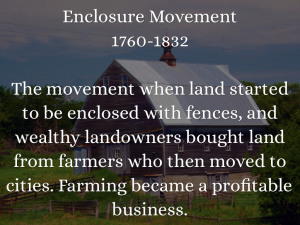 I love reading historical romances, and I love doing research. I’ve been passionate about history since I was a little girl. One of my career aspirations during my teenage years was archaeologist. I fell in love with the late Georgian era when I began to read regency historicals that included information about canal building, balloons, the first gas lights, and all the other incredible innovations of the explosion of invention that changed society between the 1750s and the 1850s.
I love reading historical romances, and I love doing research. I’ve been passionate about history since I was a little girl. One of my career aspirations during my teenage years was archaeologist. I fell in love with the late Georgian era when I began to read regency historicals that included information about canal building, balloons, the first gas lights, and all the other incredible innovations of the explosion of invention that changed society between the 1750s and the 1850s.
I see many parallels with today. To take just one example, my period includes the enclosure movement (it was started in England before it moved to Scotland). Intended to make farming more efficient, it resulted in wealthy landowners cut farm labourers off from keeping livestock and collecting foodstuffs from the commons. People who thought they had a historic right to use the common land to feed their families were suddenly cast into dire poverty. Today, companies are laying claim to intellectual property rights over plant and animal bloodlines, even human dna. And they’re taking ordinary people to court to prevent them from using what was once free to all.
Writing historical romances helps me to work through some of this stuff. The trick is to make it an essential plot point or part of the background, and not a lecture.
How does my writing process work?
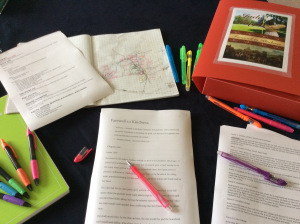
Coloured pens make everything better. Note the map of the village of Longford at top centre.
I’m still working this one out. I thought I was a planner, and I carefully planned each chapter of my first novel and my first novella. Then I went off in a different direction with each, following the characters on their own journey. This meant a lot of rewriting, going back to seed later ideas into earlier chapters.
With the current novel, I know where each quarter of the book takes place; I have a fair idea of the main plot pivot points; I know more or less what the main conflict is. But I’m only plotting in detail a chapter or two ahead. It’s going well, but I expect I’ll need to do a lot of rewriting, going back to seed later ideas into earlier chapters.
Two things that are working well for me are setting a daily word count and creating detailed character sketches of my key characters.
I started with no daily word count. I wrote when the inspiration elves consented to whisper to me. Then I set a count of 500 words a day and all of a sudden those elves started visiting me more often. Now, I’m writing a minimum of 1300 words a day, six days a week. And I need to keep that up if I’m to meet my writing schedule. According to my beta readers, the chapters I wrote more quickly are better than the ones that took me ages. Go figure.
I have an one page questionnaire for each minor character and an eight page questionnaire for my main protagonists. By the time I’ve worked my way through all the questions, I know them well, and once I know them well I know what they’ll do in any particular situation. I do the minor characters as I need them, but I do the protagonists before I start my first draft. I originally kept the character sketches in the OneNote database for the novel or novella I was working on, but my books cross in so many different ways that I’ve now created a new database in OneNote just for characters.
I also keep Pinterest boards for visual inspiration, and I draw maps and house plans so that, when my characters are moving around, I can visualise what they’re up to and work out what route they need to take and how long they’ll spend getting there.
Up next, Jessie Clever
In the second grade, Jessie began a story about a duck and a lost ring. Two harrowing pages of wide ruled notebook paper later, the ring was found. And Jessie has been writing ever since.
Armed with the firm belief that women in the Regency era could be truly awesome heroines, Jessie began telling their stories in her Spy Series, a thrilling ride in historical espionage that showcases human faults and triumphs and most importantly, love.
Jessie makes her home in the great state of New Hampshire where she lives with her husband and two very opinionated Basset Hounds. For more, visit her website at jessieclever.com.
Jessie just wrapped her Regency romance Spy Series, but as creativity often plagues those blessed with it, Jessie discovered a whole new story erupting from what she thought was the end. So she is hard at work on the follow-up series she likes to refer to as the Spy Series: The Next Generation.
But before the next series debuts, be sure to check out the heroes and heroines of the Spy Series, starting with Inevitably a Duchess: A Spy Series Novella.
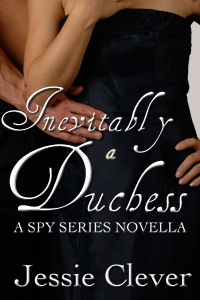 Blurb:
Blurb:Richard Black, the Duke of Lofton, waited for her, watching as the agony of marriage broke the woman he loved. Lady Jane Haven had to find a reason to survive, a purpose to carry on when it seemed God would not just let her die. But when fate finally offers them a chance to be together, a treasonous plot threatens to keep them apart. And when it becomes more than just a matter of survival, Jane must find the strength to be his duchess.
Meet Jessie on social media:



January 19, 2015
Where do you get your ideas?
I must be a writer. I’ve been asked The Question. If you’re a writer, you know all about The Question. If you’re not a writer, you might have asked a writer The Question. You know which question I mean. It’s up there in the headline to this blogpost.
Where do you get your ideas?
Neil Gaiman says that The Question is an occupational hazard, like being asked for an on-the-spot diagnosis if you’re a doctor, or for legal advice if you’re a lawyer. (Read his answer, and his exploration of that answer. It’s superb.)
Every part of the process (and ideas are only the starting point) takes practice. In an earlier post, I talked about the story games I play with children. Here’s another one; a perfect way of exercising the idea-generating mechanism.
On Facebook, a friend has been posting images as a jumping point for a story. A picture, a paragraph of setting, and a question or two. How do they feel? What happens next? I’ve been looking at paintings by Victorians who were reinventing the Regency through their own romantic filters. They’re great for prompting stories. Do you want to have a go? Just tell me in the comments what you think is happening in the picture. Here are some questions to get you started. What did he ask? What did she answer? How did the things get on the floor? Whose dress is on the couch? How does he feel?



January 18, 2015
Meeting the neighbours – a Farewell to Kindness excerpt
 Another Farewell to Kindness excerpt. Rede sees Anne for the first time:
Another Farewell to Kindness excerpt. Rede sees Anne for the first time:
The service wound to its final blessing, and the congregation followed the Rector from the church as the bells pealed.
He moved towards the door, through a rippling sea of bows, curtseys, touched foreheads, murmured ‘My Lord’s’. Out in the churchyard, the villagers and gentry stood in groups, exchanging greetings and enjoying the warm spring sunshine. Children ran in and out of the shrubbery in the adjacent Rectory garden, in a game of chase. Some had the look of the Rector, who introduced Rede to his wife. Mrs Ashbrook had a no-nonsense manner, direct light-blue eyes, and the well-padded shape of a matron with a growing family and a healthy appetite.
A trio of prettily dressed young ladies—the dark-haired girl from the Ashbrook pew, the Saxon-blonde Redwood and a remarkably attractive girl whose face was framed in brown curls—strolled arm and arm up and down the path to the church gate, as bright as butterflies in their light dresses and their charming bonnets, chattering away like starlings.
Rede stayed for a while, shaking hands with those who came for an introduction, catching up with those he’d met during the week, and generally making himself pleasant.
Several times, he met eyes as blue as his own, fringed like his with dark lashes. His predecessors had certainly left a mark on the population. Many of the poorer members of the community bore the certain sign that a female ancestor had caught a Redepenning’s fickle attention.
Mrs Forsythe, the tenant who lived unaccountably rent free, wasn’t introduced. He had been hearing her name all week. His tenants spoke of her warmly, and with respect, listing her good deeds, and praising her kindness. From what they said, she was a lynch pin of village life. Listening to their stories, he’d formed a picture of a mature widow; a gentlewoman of private—if straightened—means; a bustling matron with a finger in all the charitable activity of the parish.
The trio of young ladies on the path broke up, two coming over to be introduced as the daughters of the Rector and the Squire. The third young lady collected a child and another young woman from the Rectory garden.
The child was a little older than his Rita would have been; perhaps the age Joseph would have been, had he lived. She studied him curiously as she passed; meeting his blue gaze with her own. Indeed, he could have been looking at one of his own childhood portraits, cast in a more feminine mould.
She didn’t take her colouring from the two young ladies with her. And a quick glance after her showed that bonnets masked the faces of the two ladies they joined.
“Once my cousins arrive, we’ll invite the local gentry to dinner,” he told Mrs Ashbrook. “I’ve met some of them. Could you perhaps introduce me to others?”
As he’d hoped, she launched into a list of all the gentlemen and ladies in the neighbourhood, starting with those present. He listened impatiently as the objects of his interest moved further and further towards the gate.
At last, just as they passed under the arch, Mrs Ashbrook said, “and Mrs Forsythe and her sisters, the Miss Haverstocks. They were standing right there by the church… oh dear, you’ve missed them. They’ve just left.”
The slender figure hurrying away down the road with her sisters and daughter did not fit the picture he’d formed of the busy Mrs Forsythe. Not at all.
He continued listening to Mrs Ashbrook, commenting when appropriate, murmuring pleasantries to the people she took him to around the churchyard. And with another part of his mind he planned a change in the order of his tenant visits.
Meeting Mrs Forsythe, owner of the trimmest pair of ankles he had ever noticed and mother of a Redepenning by-blow, was suddenly a priority.



January 17, 2015
English began with “Up yours, Caesar”
Ever wondered where the words and expressions you use come from? The folk at Open University have created a fun 10 minute animated history of English that hits all the high spots from when the Roman’s left Britannia until the modern day.



January 16, 2015
Review: A sense of the ridiculous
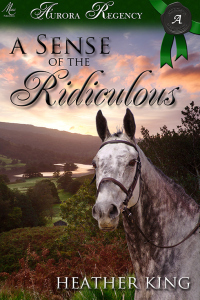 Heather King‘s delightful book, A Sense of the Ridiculous, tells the story of Jocasta, a squire’s daughter who begins the novel disappointed in the calibre of her suitors. Surely somewhere, she thinks, there must be someone who laughs at the same things she does?
Heather King‘s delightful book, A Sense of the Ridiculous, tells the story of Jocasta, a squire’s daughter who begins the novel disappointed in the calibre of her suitors. Surely somewhere, she thinks, there must be someone who laughs at the same things she does?
Jocasta is also beset by a great aunt who disapproves of Jocasta’s hoydenish ways. After a week of lectures on her behaviour, Jocasta has had enough. She breaks out, and meets with disaster, thrown from her horse and knocked unconscious.
Enter our hero Richard, the son of an inkeeper, who is surprised to discover that the unconscious boy he takes home is actually a rather lovely girl.
The happy ending was never in doubt (to the reader; the protagonists had a few nasty moments). But the journey is great! King adds some fun twists and turns along the way: amnesia, a brother who sees his search for his missing sister as a fine opportunity for attending sporting events, a robbery that threatens to derail the hero’s courtship.
King writes characters with depth: Richard and Jocasta are finely drawn, and the supporting cast also come to life on the page. I particularly liked the brother, and hope to see him in a future novel. He has some growing up to do in order to find his own happy ending, and that should be fun to read.
The dialogue sparkles, particularly the exchanges between Richard and Jocasta, where they share their sense of the ridiculous. All in all, a great read. I recommend it.



January 15, 2015
Streets of London
Here are a couple of neat resources for those who want to picture places when reading (or writing) a story set in historical London.
This one is an animated flythrough of 17th century London streets.
And this one shows London street views and a little bit of history about the houses featured, including their occupants during the 19th century.

Click on the link in the text above, or the image, to go to their website.








